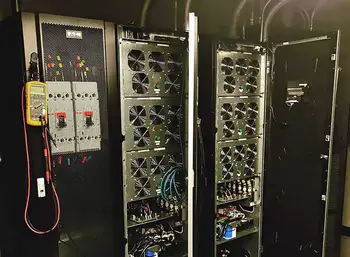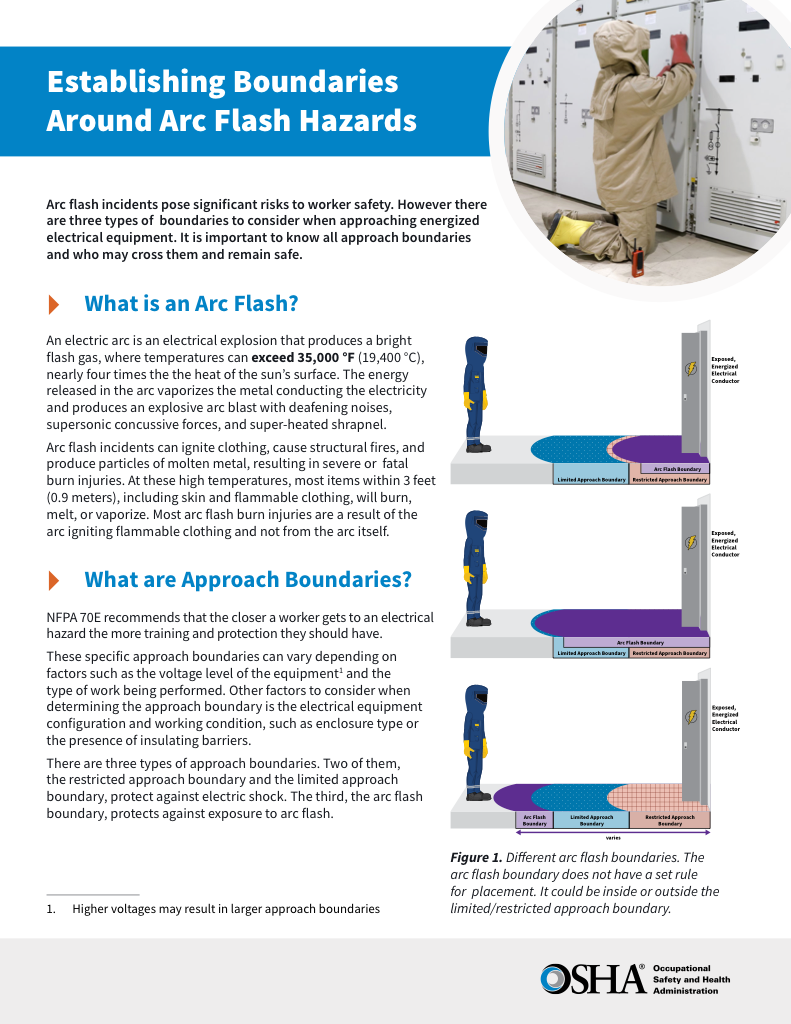What is a UPS System?
By R.W. Hurst, Editor

UPS System Training
Our customized live online or in‑person group training can be delivered to your staff at your location.

- Live Online
- 12 hours Instructor-led
- Group Training Available
Download Our OSHA 4474 Fact Sheet – Establishing Boundaries Around Arc Flash Hazards

- Understand the difference between arc flash and electric shock boundaries
- Learn who may cross each boundary and under what conditions
- Apply voltage-based rules for safer approach distances
A UPS system (Uninterruptible Power Supply) provides backup power during outages, protects equipment from voltage fluctuations, and ensures the continuous operation of critical systems in data centers, hospitals, and industrial facilities.
What is a UPS System?
It is a vital resource for businesses that need backup power to maintain operations during a power outage or other interruptions that could lead to significant financial losses.
✅ Provides immediate backup power to prevent system shutdowns
✅ Improves power quality with surge protection and voltage regulation
✅ Protects servers, networks, and critical loads with monitored battery runtime
Emergency Generators and Standby Power Training
Request a Free Training Quotation
It offers power protection, backup supply, conditioning, surge protection, management, and emergency power supply. In this article, we will explore the various types of UPS and explain in detail how a UPS works using the keywords you provided. For a broader overview of backup solutions and related technologies, visit our section on Electrical Generators and UPS Systems.
Types of UPS Systems
Three main types of UPS systems exist: online double conversion, line-interactive, and standby. Let's explore each of these types and their unique features and benefits. To understand how UPS units integrate with switching equipment, see our article on the role of an Automatic Transfer Switch in emergency power continuity.
Comparison of UPS System Types: Features, Performance, and Applications
| Feature | Online Double Conversion UPS | Line-Interactive UPS | Standby UPS |
|---|---|---|---|
| Power Protection Level | Highest | Moderate | Basic |
| Transfer Time | 0 ms (no delay) | 2–4 ms | Up to 10 ms |
| Power Conversion | AC ➝ DC ➝ AC (full double conversion) | AC with voltage regulation | Switches from utility to battery |
| Voltage Regulation | Continuous, precise | Automatic voltage regulator (AVR) | Minimal |
| Best For | Data centers, hospitals, mission-critical use | Small businesses, home offices | Personal computers, small electronics |
| Battery Usage | Always connected to load | Engages during outages | Engages only during outages |
| Cost | High | Medium | Low |
| Maintenance Requirement | High (complex systems) | Moderate | Low |
| System Size | Medium to large | Small to medium | Small |
| Noise and Heat Output | Higher | Moderate | Low |
Online Double Conversion UPS Systems
Online double conversion UPS is the most advanced and offers the highest protection level. They provide continuous power by converting the incoming AC power into DC power and back into AC power. This type of UPS is ideal for mission-critical applications requiring the highest protection level, such as data centers, hospitals, and other applications that cannot afford downtime. Online double conversion UPS uses a battery backup that is always connected to the equipment, providing uninterrupted power even during power fluctuations. In addition, the transfer time is typically zero, meaning it switches to battery power instantly when the input power fails.
Sign Up for Electricity Forum’s Generators/UPS Newsletter
Stay informed with our FREE Generators/UPS Newsletter — get the latest news, breakthrough technologies, and expert insights, delivered straight to your inbox.
Line-Interactive UPS Systems
Line-interactive UPS is suitable for small businesses and home offices. They provide basic power protection and battery backup and are easy to install and maintain. Line-interactive UPS uses an automatic voltage regulator to stabilize the voltage of the AC power supply, ensuring that equipment remains safe from damage. In addition, they have a short transfer time, typically between two to four milliseconds, which means they switch to battery power quickly when it fails.
Standby UPS Systems
Standby UPS is the most basic type of UPS suitable for personal computers and small electronic devices. They provide power protection and battery backup, but the transfer time can be up to 10 milliseconds, which means there may be a brief interruption in power when the unit switches to battery power.
How does a UPS work?
A UPS works by providing a backup power source to protected equipment during a power outage or any other interruption that may cause data loss or equipment damage. When the input power fails, the UPS switches to battery power instantly, providing uninterrupted power to sensitive equipment. In addition, the battery backup takes over the power supply during a power outage, ensuring no loss to sensitive equipment and continuing operations seamlessly until AC electricity is restored. Explore the benefits of High Efficiency UPS Systems that reduce energy waste while maintaining reliability.
Sensitive electronic equipment requires a clean and stable power source to function correctly. Power conditioning ensures that the voltage and frequency of the supply are stable, providing the necessary power source to keep equipment running without interruption. In addition, UPS provides surge protection, protecting equipment from surges and spikes, which can cause significant business losses. It can also protect equipment from lightning strikes that can cause significant damage.
The battery backup typically uses Valve Regulated Lead Acid (VRLA) batteries, which are maintenance-free and have a long lifespan. The lifespan depends on several factors, including the unit's quality and its maintenance. Emergency standby power supplies with regular maintenance can last anywhere from three to ten years. To maintain your unit, you should keep it in a clean, cool, and dry environment and perform regular maintenance, such as cleaning the battery terminals and checking the battery's charge level. It is also essential to replace the battery backup periodically, typically every two to three years, to ensure that your unit continues providing reliable backup power.
Common Power Problems
Power failures, power outages, and other common problems can cause significant business losses due to data loss and equipment damage. It is crucial for protecting sensitive equipment during these interruptions, ensuring smooth operations and reducing downtime. It offers protection, backup supply, conditioning, surge protection, management, and emergency power supply, reducing the risk of data loss and equipment damage. In addition, they are eco-friendly, help to reduce a company's carbon footprint, and extend the lifespan of sensitive electronic equipment, reducing the need for replacement. If you're wondering about battery lifespan, read our guide on How Long Do Battery Backups Last and what factors affect their performance.
How do I select the right kind?
When selecting a unit, businesses must consider their specific needs and budget. They come in various sizes, from small units that can provide backup power to a single computer to large units that can feed entire data centers. Businesses must also consider the runtime, which is the duration for which the system can provide backup power. The runtime depends on several factors, including the battery's size and the equipment's energy consumption. For help choosing the right solution for your facility, see our expert Tips for Selecting a UPS System.
Electricity Today T&D Magazine Subscribe for FREE

- Timely insights from industry experts
- Practical solutions T&D engineers
- Free access to every issue








